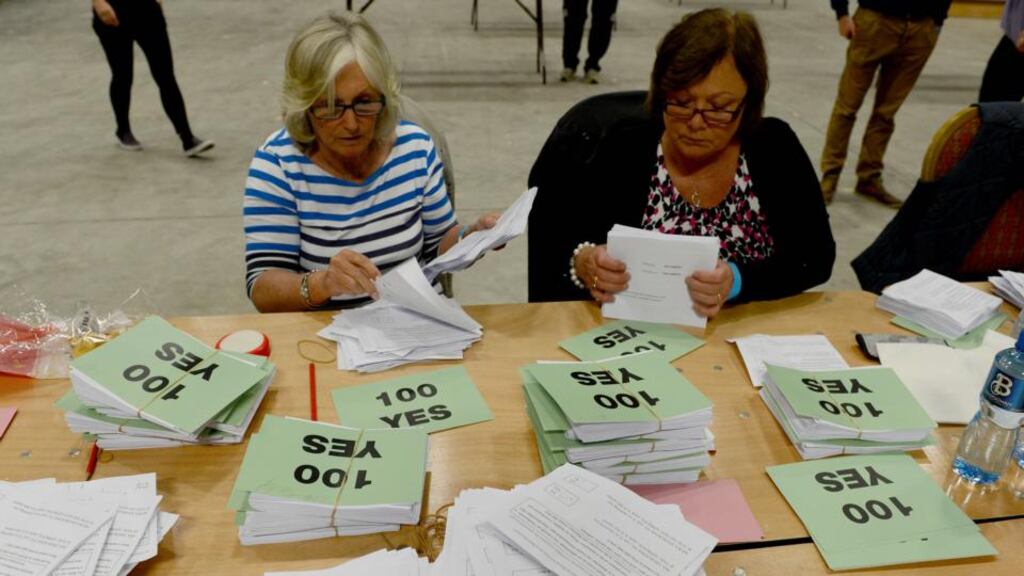The American essayist HL Mencken once observed that “for every subtle and complicated question, there is a perfectly simple and straightforward answer, which is wrong”.
Questions don’t come any more subtle than how to get democracy right. Each society must answer based on what is systemically appropriate and politically acceptable to it. Ireland has remained democratic longer than many other states. Yet dilemmas remain concerning the fine-tuning of Irish democratic structures. Four issues arguably require careful reflection: the Seanad; the Dáil electoral system; referendums; and money in politics.
The Seanad
The greatest economic crisis to have afflicted us should ideally have provoked a structured government-backed national debate on reforms which might avoid future repetitions of recent economic travails. Instead, the governmental approach to public debate has largely involved inviting the electorate to take the sledgehammer-like option of abolishing the Seanad.
Arguably, this is a waste of a good crisis. First, the Seanad debate is displacing a wider debate we should be having. Second, the abolition proposal seems to put the cart before the horse. If the Seanad is dysfunctional, we should try to eliminate that dysfunctionality.
Former senator Joe O’Toole has described the Seanad in its current composition as “the craven creature of government, toothless, undemocratic and unrepresentative”. At least some of this rings true. Fewer than 1,000 individuals (local authority members all) elect 43 of the Seanad’s 60 members - an astonishingly tiny electorate, perfectly structured to achieve one overriding aim: to make Seanad election results coincide with the latest Dáil election results. In case the electoral system fails, a choke chain on the Seanad is provided - the Taoiseach’s constitutional right to nominate 11 senators. Executive dominance is thus double-guaranteed.
Campaigners against abolition must praise the beauty of what the Seanad could be, rather than the strikingly ugly duckling it is. The case for abolition, however, has a huge flaw. Ireland is a country dominated by an inadequately controlled executive. The pro-abolition case that the country would be better managed if a potentially major check on executive power were eliminated is utterly unconvincing.
Abolition was originally, apparently, proposed to enable Taoiseach Enda Kenny to demonstrate political toughness. The resultant (strongly populist) proposal clearly generates little enthusiasm even within Coalition ranks. However, even if this proposal fails, expect no immediate positive changes: a defeated Government will hardly then expedite Seanad reforms, having no greater interest in empowering an independent-minded institution than any predecessor administration had.
The Dáil electoral system
The constitutional convention on the Constitution recently voted to retain (with some modifications) proportional representation by single transferable vote. This may reflect popular support for that system. Arguably, it also reflects hope triumphing over experience.
Ireland's political culture – facilitated by our electoral system – places extraordinary and excessive emphasis on constituency work. This has placed a crushing burden on the Oireachtas committee system in the shape of a near complete lack of electoral reward for almost anything committees do. Consequently, we get frequently poorly attended committees, whose work is disproportionately borne by a diligent minority. Current proposals to replace the Seanad with strengthened committees won't work: they will operate in the absence of any electoral incentive for TDs to make them work. Instead, an already weak committee system – bled of the added value of senators under less electoral pressure than their Dáil colleagues – is likely to disimprove.
Referendums
Irish democracy is mostly representative. We switch occasionally to direct democracy – but reflect little on when we should do this, simply having referendums when legally required to and not otherwise.
Effectively, we let our courts do the thinking for us. The judicial reaction, particularly in EU matters, has been sporadically revolutionary. The 1987 Crotty ruling (including its super-sensitive test of sovereignty violations) has caused uniquely frequent EU-related referendums here. The Supreme Court position shifted recently. Last October's Pringle judgments moderated Crotty, instituting a more workable-looking test regarding sovereignty. The difference this will make in practice remains to be seen, however. Less desirably, December's McCrystal ruling confirmed the 1995 McKenna (No 2) decision, blocking government – but not private – referendum financing.
Since 1995, Irish referendum campaigns have been at the mercy of big money – not always flooded with cash, but always subject to this risk.
Money
Ireland struggles generally to contain the corrosive effect of big money on political life. Our recent economic history testifies to the disastrous effects which inadequate regulation in this area has. Even if the infamous tent at Ballybrit racecourse is long gone, this was in any case merely the physical manifestation of a bigger problem: a regulatory system which permits private wealth to play far too great a role in politics. One particularly blatant failure has been the continued refusal of successive administrations to ensure the absolute minimum standard of complete transparency regarding all political donations. Incredibly, we are still not given full information on who pays for the election of Irish governments.
Dr Gavin Barrett is a senior lecturer in the school of law, University College Dublin










